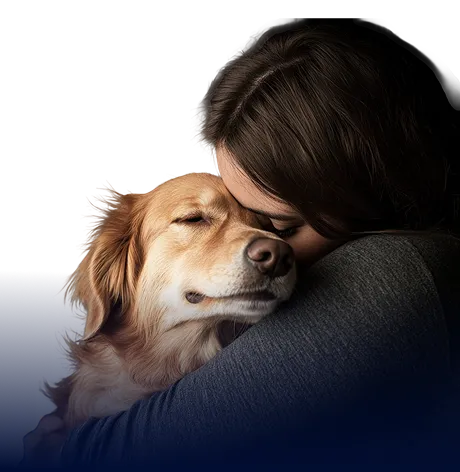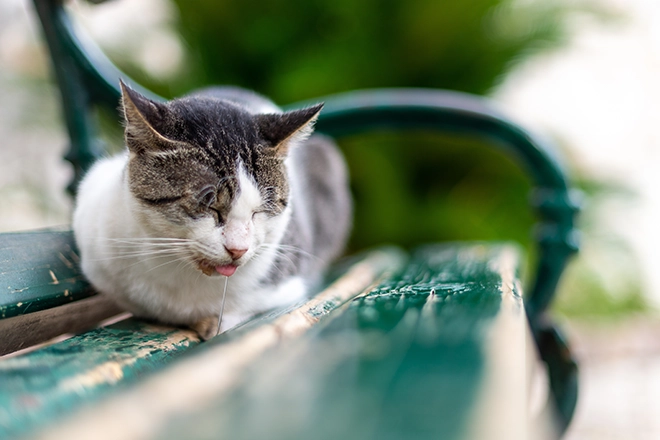For the Purrbabies


While cats may drool when they’re really happy, excessive drooling also may occur due to serious underlying conditions that warrant attention.

There are several reasons why your cat may be drooling, and they aren’t all a cause for concern. Once you notice your cat drooling, though, it’s important to make a vet appointment and narrow down the root cause. Sometimes it can be as simple as a very happy kitty, but sometimes it can be much more serious. Here are the nine biggest reasons cats drool.
Dental issues in cats are very common, particularly as cats get older. Lack of good dental hygiene, age, and certain health conditions can all contribute to the development of dental diseases in your cat’s mouth. Because of this, it’s a good idea to brush your cat’s teeth and use dental additives (like this food additive) to help prevent costly complications later on. Here are some of the dental and oral diseases that can develop and cause drooling.
Gingivitis is caused by a build-up of bacteria-infested plaque on the teeth and can result in inflamed, swollen, and painful gums. As gingivitis progresses, bacteria damages the connective tissues beneath the gumline that keep your cat’s teeth in place. When left untreated, gingivitis can also cause periodontitis.
Marked by loose teeth and tooth loss, periodontitis is almost always the result of uncontrolled gingivitis, and it happens bacteria destroys the connective tissue that holds your cat’s teeth. Signs of this painful condition include inflamed gums, excessive drooling, and a reluctance or unwillingness to eat — which can lead to even more health problems for your feline friend.
Tooth resorption occurs when the tooth begins to break down from the inside out. By the time cats are showing signs of tooth resorption — including a pink hue around the gumline, reluctance to eat, drooling, and irritation — the tooth is already very damaged. Depending on the severity of the tooth resorption, some or all of the tooth may need to be removed.
Certain conditions are caused by an abnormal immune system response.. Here are a few of the less common, immune-related dental diseases cats can experience.
“These types of chronic oral ailments can be painful for cats. They might not want to eat or clean themselves. There are currently no medications to cure these conditions, and full mouth extractions can seem extreme but are ultimately the best way to provide relief!” - Dr. Erica Irish
With autoimmune conditions, preventative measures like brushing your cat’s teeth may not be enough. Special medications, like cyclosporine, may be used to reduce your cat’s immune response and alleviate symptoms. Ultimately, tooth extractions for some or all of your cat’s teeth may be necessary.
Cancerous tumors in the mouth can also cause drooling, along with bad breath, blooding, and problems eating. For larger tumors or those on the jawbone, some cats have trouble closing their mouths.
Gagging, vomiting, or feeling nauseous commonly causes excessive drooling in cats. Unfortunately, vomiting is a fairly frequent symptom of a variety of in cats, ranging from mild to severe. While you don’t have to rush your cat to the vet the first time they throw up, you’ll want to keep an eye on them and definitely give your veterinarian a call if the episode repeats or if they’re showing other symptoms.
An upper respiratory infection (URI), or cat cold, may be the cause of your cat’s drooling. URIs can be caused by viruses or bacteria, and while drooling isn’t as common of a symptom with cat colds, it can be a sign that your cat is dealing with an infection. Here are the symptoms to watch out for:
Certain neurological conditions, such as Horner’s syndrome and vestibular syndrome, may cause your cat to drool. Other symptoms, such as disorientation, involuntary head tilting, or odd, exaggerated gaits, can also be present.
Some diseases and conditions can cause nausea and drooling for your cat. Here are a few conditions that might be impacting your cat.
Just like with people, inflammatory bowel occurs when cats experience chronic inflammation in their digestive tract, which leads to a thickening of their stomach or intestinal walls.
An emergency for diabetic kitties, DKA occurs when diabetic cats develop another condition that puts more stress on their cat body, which may already be dealing with insulin regulation or life-threatening illnesses caused by unchecked or undiagnosed diabetes mellitus. Common conditions that increase the risk of DKA include pancreatitis, fatty liver, cancer, and kidney disease.
Liver (hepatic) and kidney (renal) disease can also cause numerous symptoms, including drooling. For either of these conditions, other symptoms can include weight loss, a lack of appetite, vomiting, and increased thirst.
As cats age, medications may become a part of the normal routine. Whether it’s for any of the conditions listed above or something else, it may be necessary to give your cat oral medications that have a bitter taste, and these can cause drooling.
Another issue, and significantly more urgent, may also be poison. Many household cleaners and chemicals are toxic to cats. Be sure to keep cleaning products and other toxic substances out of your cat’s reach. Even the smell of certain chemicals can make a cat drool.
🚨If you suspect that your cat has been poisoned and they are drooling or unresponsive, call 855-764-7661 and plan to get to your nearest emergency vet.
Sometimes, cats drool due to behavior or the situation — such as happiness or stress — and it has nothing to do with their health. Even if your cat is perfectly healthy and drooling, it’s still good to know why it’s happening, and if necessary, how to alleviate the problem causing it.
When cats get anxious, sometimes they drool. Some other signs may also be present, such as dilated pupils, avoiding eye contact, or crouching. There are multiple causes of anxiety and while some are obvious, such as loud noises, there are some that aren’t so obvious.
You can help your cat have a stress free experience with calming supplements and by making sure their environment is as calming as possible. Do this by limiting loud music, providing enrichment, and promoting a good relationship between your cat and other pets in the household.
Some cats drool when they are very happy, too. When cats are pleasure drooling, they may be snuggling with their favorite person or pet, exposing their stomach, or making biscuits. Additionally, your cat may be purring if they are happy. It’s important to note that veterinarians aren’t sure how cats purr or all the reasons they do. Purring can also indicate hunger or stress, so pet owners should pay close attention to other signals their cat gives off.
Lastly, cats may also drool due to a foreign object. Whether it’s food, treats, or an object that your cat shouldn’t have eaten, your cat may be drooling because something is lodged in their mouth or throat. It’s important to check and make sure that your cat isn’t choking and if so, dislodge any obstruction you can see. If at all possible, have someone drive you and your cat to the vet while you work to help your cat.
👉 String, thread, and similar items can make an appealing toy for cats, but it can also lead to choking and blockages. Do NOT pull on these items — your cat requires immediate medical attention!
Like dogs, cats sweat very little, so their body may react to extreme heat by excessive drooling or panting as a way to cool down. However, excessive drooling may be a sign of heatstroke, especially if accompanied by other symptoms such as vomiting, lethargy, and disorientation. Call your vet immediately if you suspect your cat may be suffering from heatstroke, as this can be a life-threatening emergency.
While the symptoms of other illnesses are a telltale sign that your cat needs to see a vet, you may notice your cat drooling without obvious symptoms. Here are a few subtle changes to watch for when you notice your cat drooling.
With dental conditions in particular, a change in eating habits can be a sign of a problem. If your cat is eating less or favoring one side of their mouth over another, it can indicate some issues. Other health problems may cause your cat to eat less overall as well, so take note of any dietary changes your cat may be experiencing.
Particularly with dental and oral disease, your cat’s breath may change. While your pets won’t exactly have wintergreen fresh breath, bad breath can be a sign that your cat is dealing with dental disease or other issues.
Watch your cat for changes in behavior. Look for signs of pain or anxiety, or changes in bathroom or eating habits. These changes can signify other conditions that your cat may be experiencing where drooling is merely a symptom.
When it comes to taking your cat to the vet, there are some things you can do to make it easier and a better visit for your vet, your cat, and you.
Before leaving home, gather up some essentials that you and your cat will need. While it isn’t a good idea to medicate your cat without knowing why they are drooling, you can make them comfortable for the car ride by covering their carrier with a towel or blanket while also ensuring airflow. Here are some other things to bring with you to the vet.
Once you’re at the vet, there are certain things that pet parents can expect.
Oral issues, such as periodontal disease, tooth decay, or mouth injuries, are usually the cause of excessive drooling. It can also be a response to stress, nausea or underlying health conditions like liver disease or respiratory infection. Lastly, certain toxins, like certain plants and chemicals, can cause excessive drooling and other symptoms like vomiting if ingested.
No specific breed of cats is more prone to drooling. Any breed can start drooling excessively due to a range of reasons including dental problems, nausea, or certain neurological conditions.
Yes, always take your cat to the vet if they start drooling excessively. Excessive drooling can be a sign of several serious health issues including dental disease, respiratory infection, or poisoning.
Treatments for cats that drool usually depend on the underlying cause. This can range from dental cleaning and extractions for oral health issues, to medications for infections or other health conditions. Sometimes, all it takes is a change in diet or environment to reduce stress and allergy triggers.








